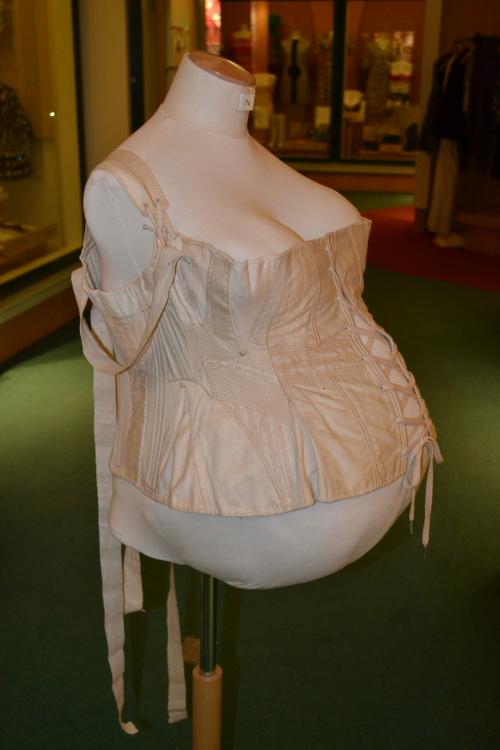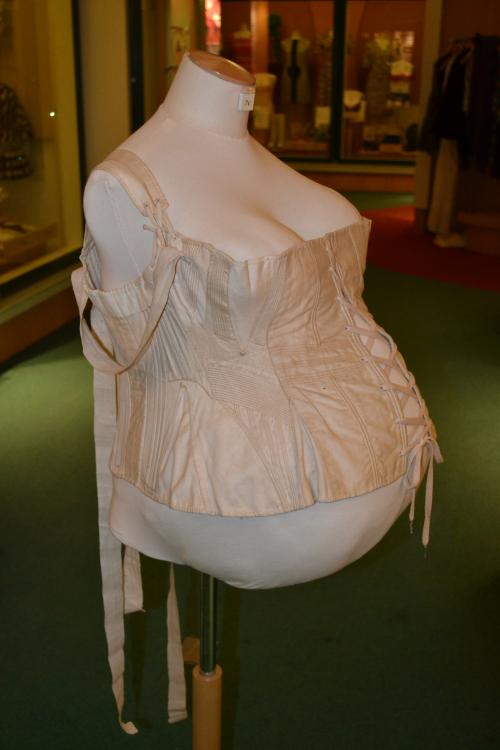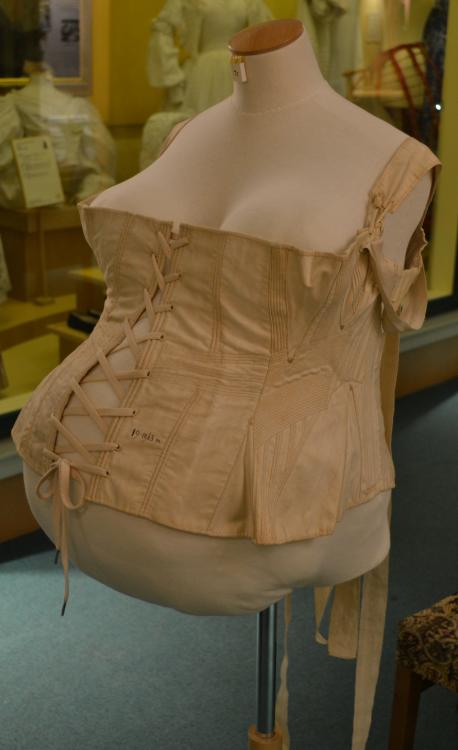Gestation Corset
Sam, with her vast knowledge of costume collections, has never seen another maternity corset. Made of sateen and whalebone, this stay would have been worn to slim the torso and push up the breasts. During the second half of the 19th century, corsets were specifically designed to wear while bicycling, playing tennis and horseback riding, as well as for maternity wear. Thank goodness things have changed! Driven by fashion to wear a tightly laced corset, some women went so far that they could only breathe with the top part of their lungs. This caused the bottom part of their lungs to fill with mucus. Yuk!


